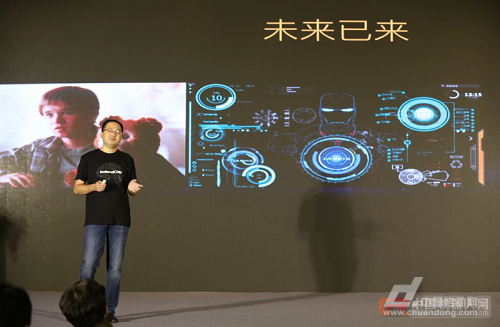Some time ago, as it was believed that the giants were heading toward the next traffic-level entrance, the "smart speaker" became a hot topic in the industry. Echo and Google Assistant dominated abroad, while domestic players like Xiaodu and others launched their own products, fueling the wave of this boom. With over 100 "boxes" on the market, the smart speaker sector was booming.
But after the initial rush, the market's attention shifted to providing AI chips for smart speakers. On October 31st, Hangzhou Guoxin, a veteran in set-top box chip manufacturing, held a conference to launch its new AI chip, GX8010, equipped with an NPU. The key application areas of this chip include smart speakers, voice interfaces, and preschool education in smart toys.
Ecology is being handed over to the big players, and AI chips are winning due to their specificity.

Hangzhou Guoxin CEO Huang Zhijie explained that the company aims to transition from "digital life" to "intelligent life." In early 2016, they established an AI division and began developing AI chips. Technically, some of the communication, signal processing, and video coding technologies used in traditional set-top box chips are also applicable here, creating a technical synergy.
With deep learning making major breakthroughs across various fields, the demand for higher processor computing power has increased. As a result, many companies are now focusing on building AI-specific chips. While traditional CPUs can handle linear problems, they are not well-suited for the AI era, especially for deep neural networks. Like most vendors, Guoxin is developing specialized chips to improve efficiency.
The newly released GX8010 features an independently developed NPU called gxNPU, tailored for artificial intelligence. It addresses the inefficiency of traditional chips in handling neural network operations and accelerates them effectively.
Additionally, to address the limited memory bandwidth in IoT devices, Guoxin designed a neural network compression engine called NCompressor. This allows one-click compression of neural networks, significantly reducing memory usage and bandwidth while improving operational speed.
How does this NPU differ from Google’s TPU or Huawei’s Kirin 970 NPU? Google TPU is a server-based processor focused on massive computing power, suitable for cloud intelligence. It isn’t as sensitive to cost or power consumption. In contrast, the gxNPU is designed for IoT and terminal intelligence, featuring a neural network compression engine that reduces memory and bandwidth needs, lowers power consumption, and makes it more suitable for a wide range of IoT applications.
What does “high performance and low power consumption†mean for terminal intelligence? Guoxin offers solutions like “multi-core heterogeneity†and “multi-level wake-up†to manage dynamic power consumption and standby issues.
Guoxin Product Manager RobotLing explained that multi-core heterogeneity involves optimizing the frequency and timing of each module’s operation. This enables on-demand use and efficient service delivery. For example, in a voice interaction scenario, the GX8010 only needs 100-200 MHz for offline speech recognition, while the DSP runs at 300-400 MHz for multi-microphone array processing. The CPU dynamically adjusts system load, allowing the chip to operate efficiently while maintaining very low power consumption.
The standby problem has always been a challenge for voice-activated devices. Even in standby mode, the system must be able to wake up upon hearing a voice command, which requires actions like voice collection, noise reduction, and keyword detection. The GX8010’s multi-level wake-up mechanism divides tasks based on whether there is sound, voice, or a keyword. In standby mode, the chip uses VAD (Voice Activity Detection) to detect voice input. Once a command is received, the DSP starts noise reduction, the NPU activates word recognition, and if a keyword is detected, the entire system is activated. This step-by-step wake-up mechanism ensures real-time response and extends battery life.
Leveraging partnerships to target the IoT market, Guoxin showcased a wide range of collaborating companies at the event, including Alibaba, Tencent, HKUST, Sibischi, Yunzhisheng, and others. Rokid and Sibischi founders were invited as keynote speakers and participated in post-conference visits.
Huang Zhijie stated that the chip should be the result of multi-party cooperation. Rokid founder Misa emphasized, “We don’t make chips ourselves, nor do we need all the technology from top to bottom.â€
In terms of collaboration, Guoxin will work with Rokid on smart speakers and with Sibischi on smart home and automotive applications. Huang Zhijie mentioned that the goal for this chip is to generate revenue in 2018.
The Hangzhou Guoxin team is composed of Zhejiang University alumni. CEO Huang Zhijie graduated from Zhejiang University, and RobotLing, the product manager, is his younger brother from the same university.
In the 19th-century California Gold Rush, the most profitable weren’t the gold diggers but those who sold shovels. In this wave of smart speakers and smart homes, could the biggest winners be those producing the “brain†of AI chips?
Network Accessories,Wifi Adapter,Fiber Optic Network Components,Splitter Fiber Optic
Cixi Dani Plastic Products Co.,Ltd , https://www.danifiberoptic.com